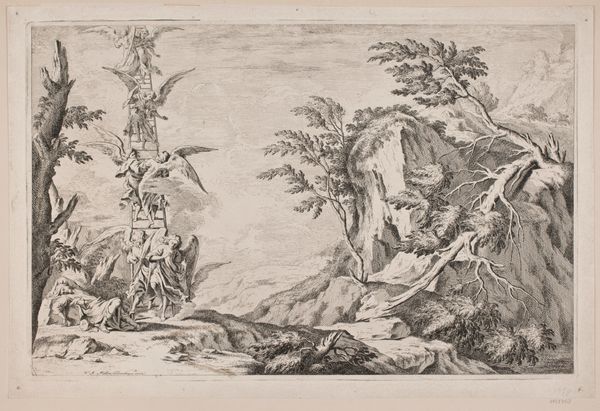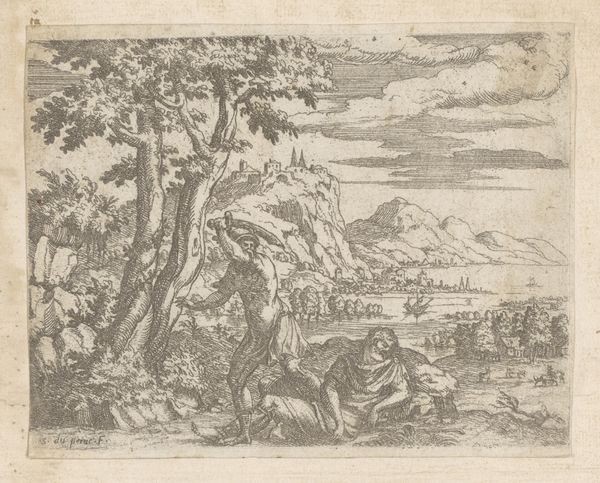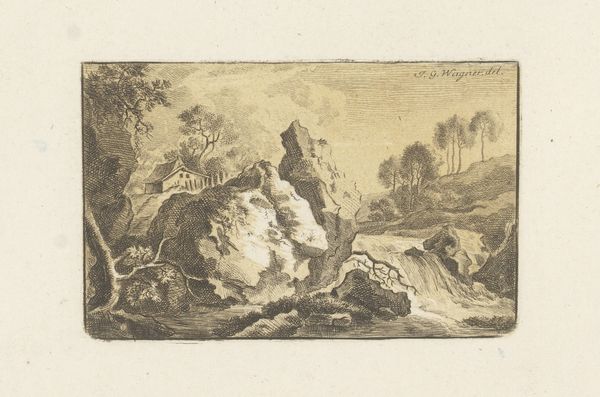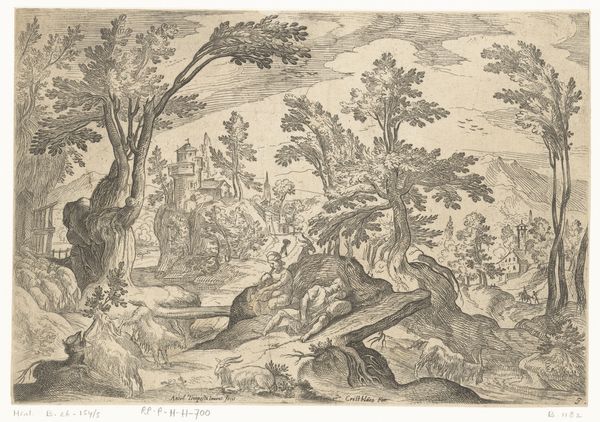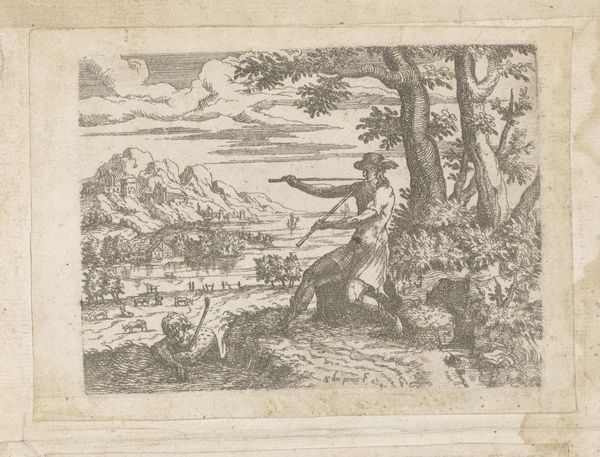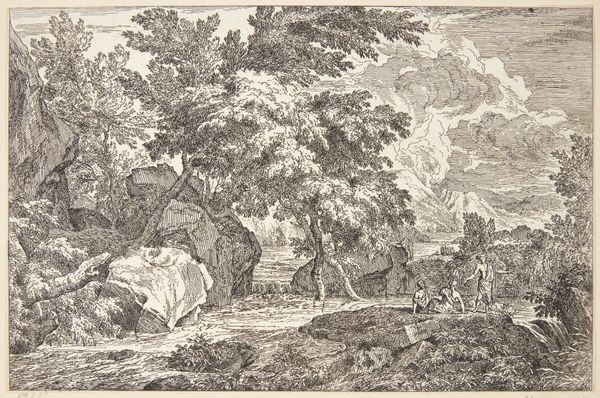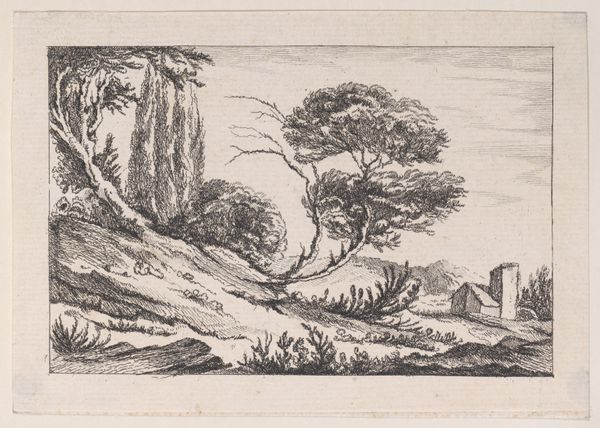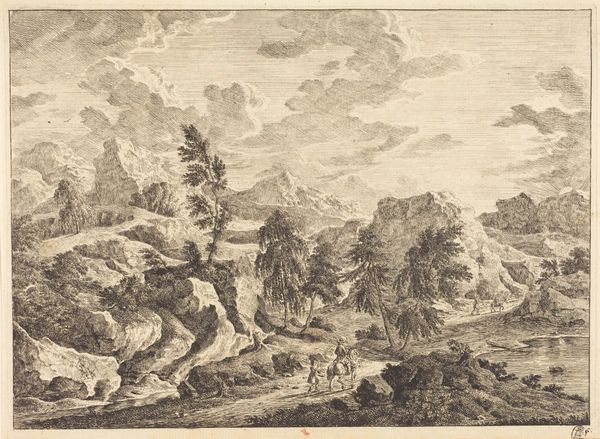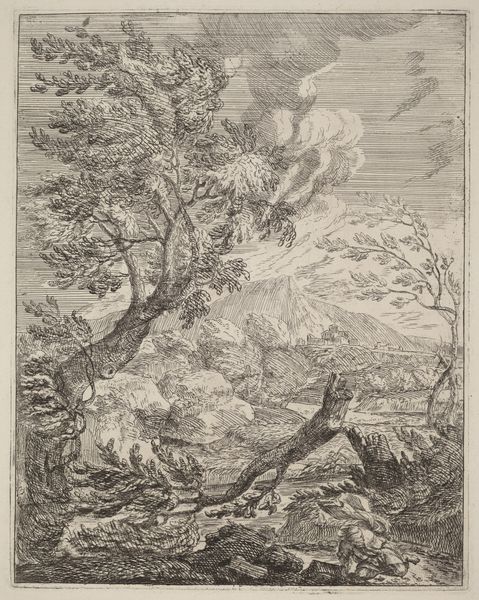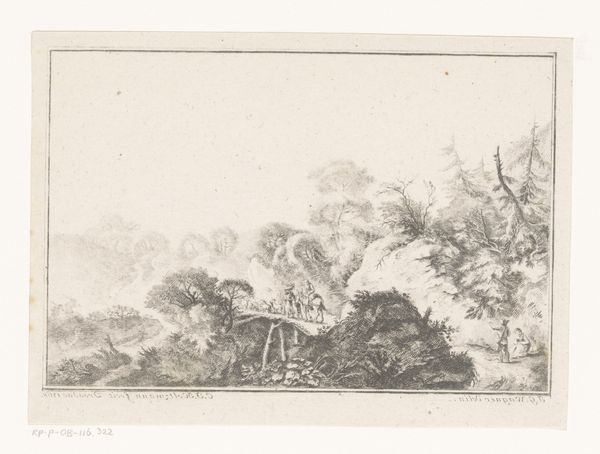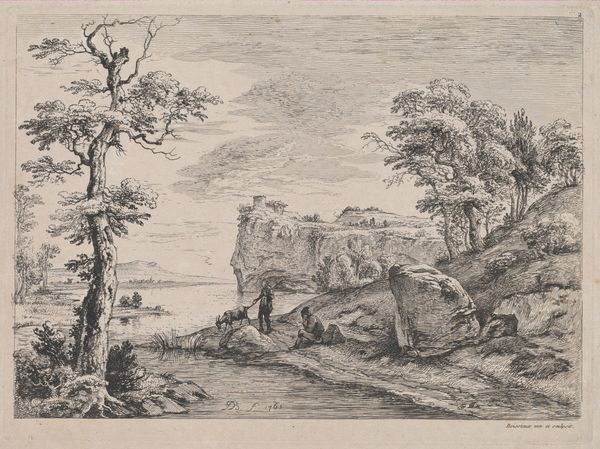
Dimensions: 268 mm (height) x 442 mm (width) (plademaal)
This print, *Landskab med Bjergprædikenen*, was created by W.A. Müller using etching, a printmaking process with a rich history. The image begins with a metal plate, likely copper. The artist covers it with a waxy, acid-resistant ground, then scratches through this ground with a needle to expose the metal. The plate is then submerged in acid, which bites into the exposed lines, creating grooves. The longer it’s etched, the deeper the lines become, allowing for a range of tonal effects. Ink is applied to the plate, filling the etched lines, and the surface is wiped clean. Finally, the plate is pressed onto paper, transferring the ink and creating the print. The quality of the lines – their fineness, depth, and density – all speak to Müller's skill. The labor intensive process and the resulting image allowed for a wider distribution of religious imagery during this period. So, next time you look at a print, consider the careful, skilled work that went into its making, and its place in the history of accessible art.
Comments
No comments
Be the first to comment and join the conversation on the ultimate creative platform.
